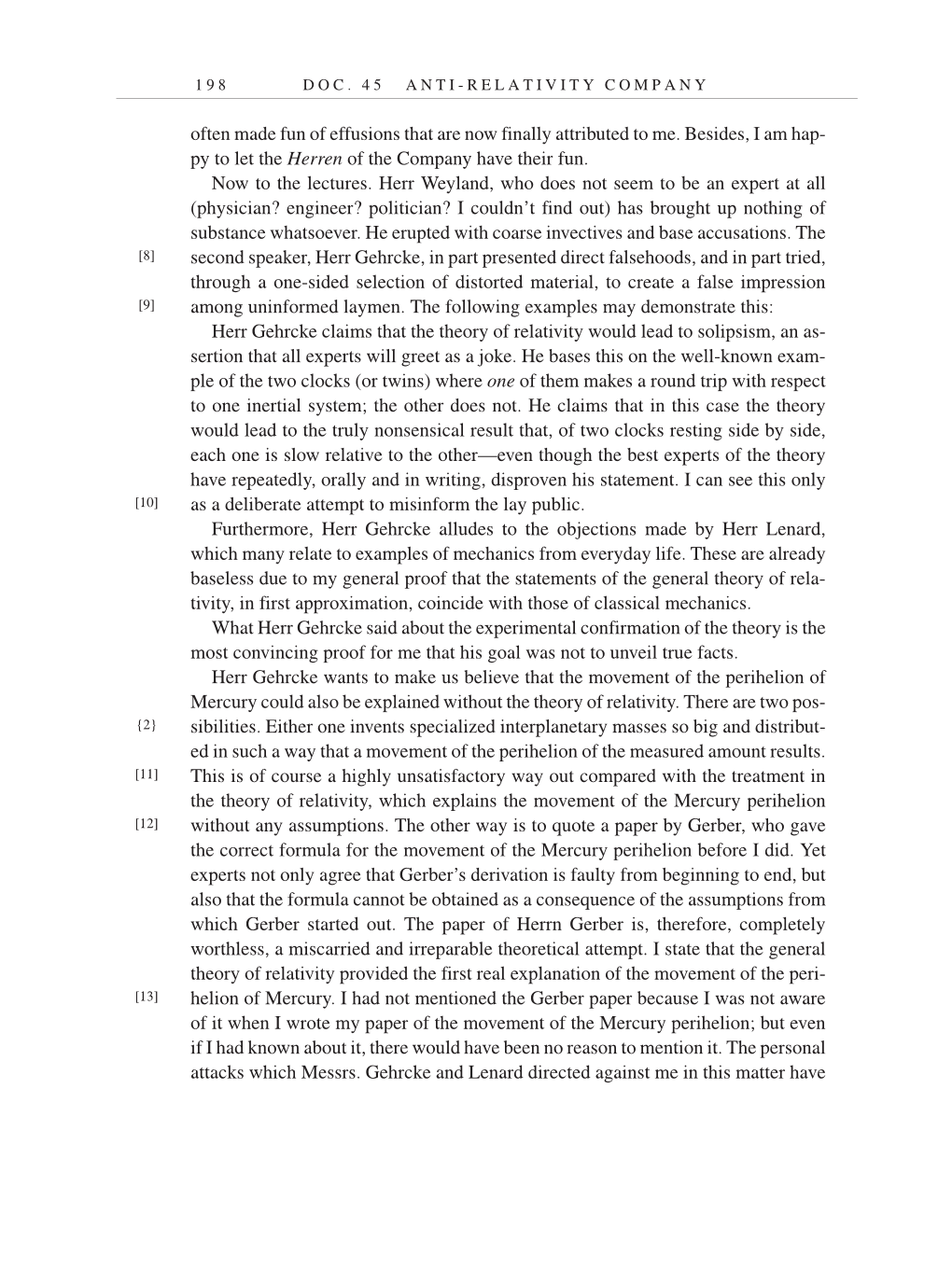1 9 8 D O C . 4 5 A N T I - R E L A T I V I T Y C O M P A N Y
often made fun of effusions that are now finally attributed to me. Besides, I am hap-
py to let the Herren of the Company have their fun.
Now to the lectures. Herr Weyland, who does not seem to be an expert at all
(physician? engineer? politician? I couldn’t find out) has brought up nothing of
substance whatsoever. He erupted with coarse invectives and base accusations. The
second speaker, Herr Gehrcke, in part presented direct falsehoods, and in part tried,
through a one-sided selection of distorted material, to create a false impression
among uninformed laymen. The following examples may demonstrate this:
Herr Gehrcke claims that the theory of relativity would lead to solipsism, an as-
sertion that all experts will greet as a joke. He bases this on the well-known exam-
ple of the two clocks (or twins) where one of them makes a round trip with respect
to one inertial system; the other does not. He claims that in this case the theory
would lead to the truly nonsensical result that, of two clocks resting side by side,
each one is slow relative to the other—even though the best experts of the theory
have repeatedly, orally and in writing, disproven his statement. I can see this only
as a deliberate attempt to misinform the lay public.
Furthermore, Herr Gehrcke alludes to the objections made by Herr Lenard,
which many relate to examples of mechanics from everyday life. These are already
baseless due to my general proof that the statements of the general theory of rela-
tivity, in first approximation, coincide with those of classical mechanics.
What Herr Gehrcke said about the experimental confirmation of the theory is the
most convincing proof for me that his goal was not to unveil true facts.
Herr Gehrcke wants to make us believe that the movement of the perihelion of
Mercury could also be explained without the theory of relativity. There are two pos-
sibilities. Either one invents specialized interplanetary masses so big and distribut-
ed in such a way that a movement of the perihelion of the measured amount results.
This is of course a highly unsatisfactory way out compared with the treatment in
the theory of relativity, which explains the movement of the Mercury perihelion
without any assumptions. The other way is to quote a paper by Gerber, who gave
the correct formula for the movement of the Mercury perihelion before I did. Yet
experts not only agree that Gerber’s derivation is faulty from beginning to end, but
also that the formula cannot be obtained as a consequence of the assumptions from
which Gerber started out. The paper of Herrn Gerber is, therefore, completely
worthless, a miscarried and irreparable theoretical attempt. I state that the general
theory of relativity provided the first real explanation of the movement of the peri-
helion of Mercury. I had not mentioned the Gerber paper because I was not aware
of it when I wrote my paper of the movement of the Mercury perihelion; but even
if I had known about it, there would have been no reason to mention it. The personal
attacks which Messrs. Gehrcke and Lenard directed against me in this matter have
[8]
[9]
[10]
{2}
[11]
[12]
[13]
